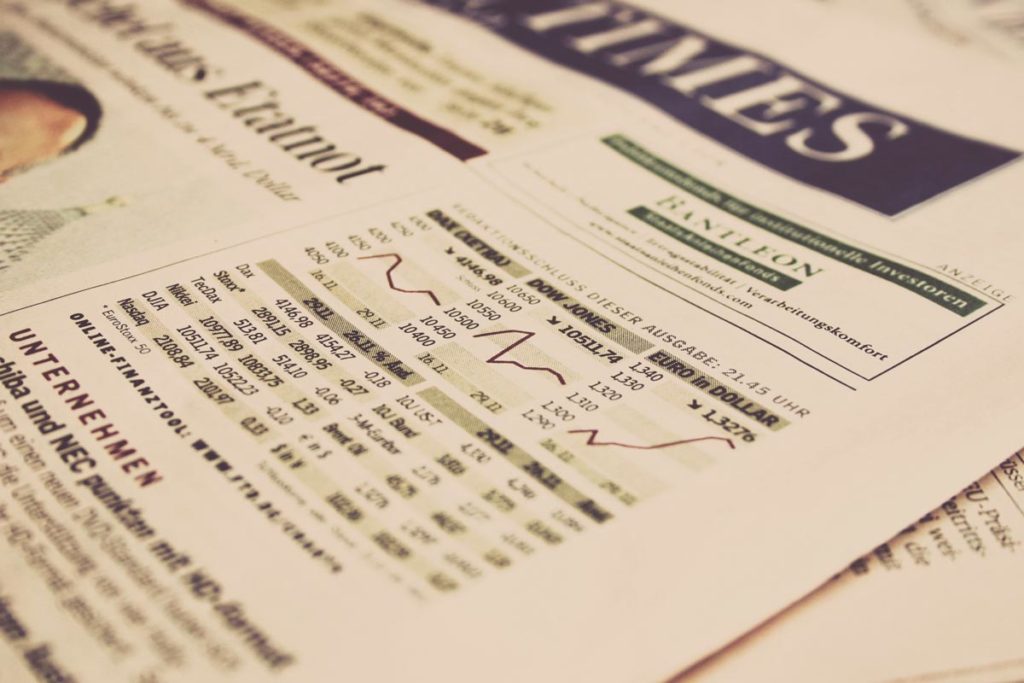Climate shocks can impact the finance sector in many different ways: from insurance costs to investment decisions and beyond. RECEIPT is investigating how these storylines might unfold as the planet warms, which world regions are most critical and how stakeholders might manage these new risks – as IIASA’s Stefan Hochrainer-Stigler and Reinhard Mechler explain.
The connections between climate change and the finance sector might not be obvious at first glance – how should we picture the links?
Stefan Hochrainer-Stigler (SHS): You can see the interconnections between climate change, risk and finance at work in both the public and the private sector. Starting with the public sector: if an extreme climate event occurs, governments may need to finance the losses caused. They can do this through ‘pro-active’ – also known as ‘ex-ante’ – instruments that already exist: insurance, reserve funds or contingent credit lines, for example. Or they can use ‘ex-post’ financing instruments that are only put in place after the event: such as taking out credit or diverting money from the budget to finance losses. Think of what’s happening now with the COVID crisis, as governments rush to create new instruments to finance the costs of lockdown. It’s the same for hazards and climate shocks, you have to find ways to cover the costs.
Reinhard Mechler (RM): Insurance takes on a particularly important role in financing the losses caused by climate-driven natural disasters. From a societal perspective, insurance helps us manage risk by spreading and pooling it across a vast number of people. Insurance is widely offered by the private sector, particularly in industrialised, but also increasingly in developing countries. Governments are also acting as suppliers (such as in Spain and France), regulators and providers of financial subsidies. The goal of our research in RECEIPT is to look at the different dimensions of public and private sector finance and see how they interact so that we can estimate the impact of remote climate effects unfolding outside of Europe.

How might it come about that an extreme climate event arising in one part of the world impacts the finance sector here in Europe?
SHS: Let’s imagine a storyline where a Hurricane Irma strikes Miami as well as the Caribbean countries – it hasn’t happened yet but it is physically plausible and supported by past observations. Damages and losses will be vastly higher, with significant economic consequences for Europe. How? Well firstly, the Caribbean is home to a number of EU territories, which would need to access finance through the European Solidarity Fund for example. If damage is extreme enough, at what point does this fund reach its limits?
RM: Second, beyond this, countries will get compensation through an instrument called the Caribbean Catastrophe Risk Insurance Facility (CCRIF). This is a mutual insurance facility where countries in the region pay in, jointly own the risk and jointly provide insurance. The EU has a stake in this fund too: on the one hand, as the island nations of Sint-Maarten and Saint-Martin are directly involved due to their links to the Netherlands and France respectively; on the other hand, the EU has provided initial capitalisation for this first-of-its-kind fund. If climate change worsens risks, further capitalisation will be needed to strengthen the pool. It is likely that the EU will be asked to step up its support as it has a direct obligation (due to its relation to the EU territories) as well as a moral obligation (as a region that produces a high volume of greenhouse gases).
SHS: Taking the storyline even a step further, losses incurred in the US from a hurricane hitting Florida would also impact the private insurance market. Insurers and reinsurers operate globally and thus would need to pay. As they might get worried about further financing such risks, which could lead to the emergence of a ‘hard’ insurance market, where it’s much more difficult to get insurance from reinsurers – and that would have an impact on accessing insurance and reinsurance cover and its costs in Europe too.
What is the demand among stakeholders in the finance sector for this kind of climate information – and what can RECEIPT offer that’s new?
RM: Over the last ten years or so, financial players like banks and insurance providers have recognised that climate change is very important. However, they still tend to look to shorter time horizons when decisions need to be made, meaning they might not consider all kinds of future-oriented scenarios or eventualities. Nevertheless they are keenly interested in understanding these issues, because climate change upends the basic way of working in insurance and finance – namely working with observations based on past losses. Climate research shows that the past may not be always be a good predictor of the future. So it becomes necessary to think outside of the box.
That’s where research like RECEIPT can assist. Workingwith storylines, we can take our observations of the past and use modelling to project them into the future. Marrying the narrative power of storylines with the quantification of climate risks is a great innovation of RECEIPT.
SHS: Exactly, the storylines bring added value on top of new research insights building on mathematical or statistical perspectives. It’s a different take on the whole issue, something outside the typical radar screen – and this new way of thinking about risks can also lead to new and different results. Our team working on these storylines in the finance sectors combines this expertise: from the Institute for Environmental Studies at the Vrije Universiteit Amsterdam looking into private sector financing and insurance consequences; specialists form the University of Bern and ETH Zürich focused on modelling events like cyclones; and ourselves at IIASA who are looking more at the public finance side. Given that everything is interlinked, and the finance sector in particular, we are working in an integrated way.

What is the impact you most hope to achieve with the RECEIPT research?
SHS: Currently we are working to raise the interest of key stakeholders, who we think can make a change – to spark their interest in our results, our storylines and make it relevant for them. Ultimately our goal is that the RECEIPT research will have an influence on the development of policies and instruments: for the public sector, for example, that fiscal stress testing help us to better learn how to better prepare for climate risks outside of Europe; or that insurance providers can gain a better view on how climate effects around the world might influence their business too.
RM: Similarly, I’m confident that the project can lead to increased awareness about climate change impacts generally and in the finance sector specifically. In particular, how obligations – direct or moral – may lead to more equitable risk sharing across the globe. I hope this can support private and public sector institutions in taking further action on building resilience both within the EU but also outside Europe – the awareness that we need to act in a more integrated way right across the globe, as we need to effectively address climate risk and live up to the Paris ambition of strongly decarbonising and building resilience for all.
Get more information about our storyline research on finance here.

Reinhard Mechler has over 20 years of experience analysing and addressing socio-economic aspects of disaster and climate change risks. His interest is to provide evidence-based advice to a wide range of public and private sector decision-makers in order to improve decisions and build resilience against salient risks. Currently, he is the Acting Director of the Risk and Resilience (RISK) Program at IIASA. He has also been a visiting professor at the University of Graz and is a senior lecturer at the University for Economics and Business in Vienna.

Stefan Hochrainer-Stigler is a Senior Research Scholar with the Risk and Resilience (RISK) program at IIASA, and the leader of the Risk Analysis and Modeling group. In addition to being member of the Board of Directors of the Integrated Disaster Risk Management (IDRiM) Society and the Board of Directors for the Global Alliance of Disaster Research Institutes (GADRI), Dr. Hochrainer-Stigler is also a lecturer at the University of Vienna, the Karlsruhe Institute of Technology and the UME Graduate School at the Institute for Advanced Study in Pavia. His main research interests include risk management of extreme events such as natural disasters in developing countries, systemic risk analysis, statistical (stochastic) modeling of rare events, extreme value theory, dependency of risks using copula approaches, econometrics, and multivariate analysis.
Published on : 25 September 2020
